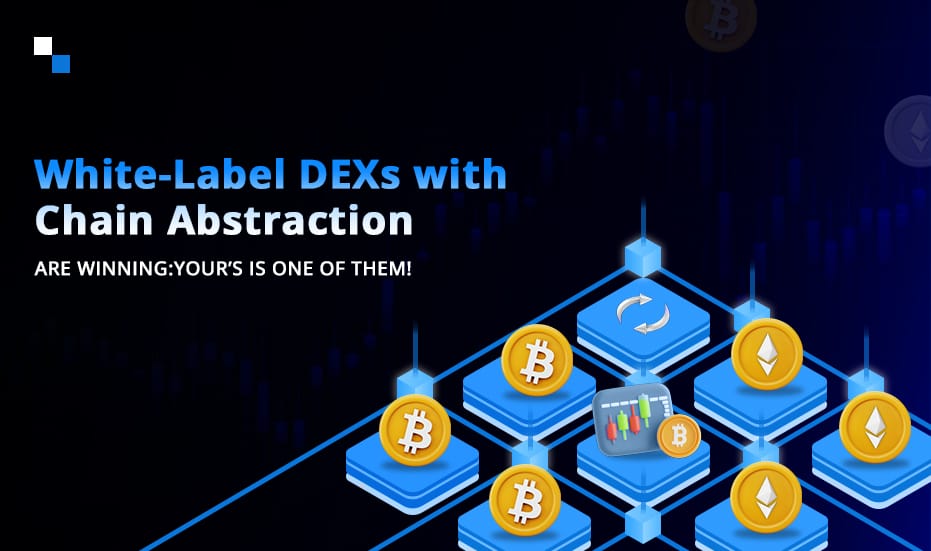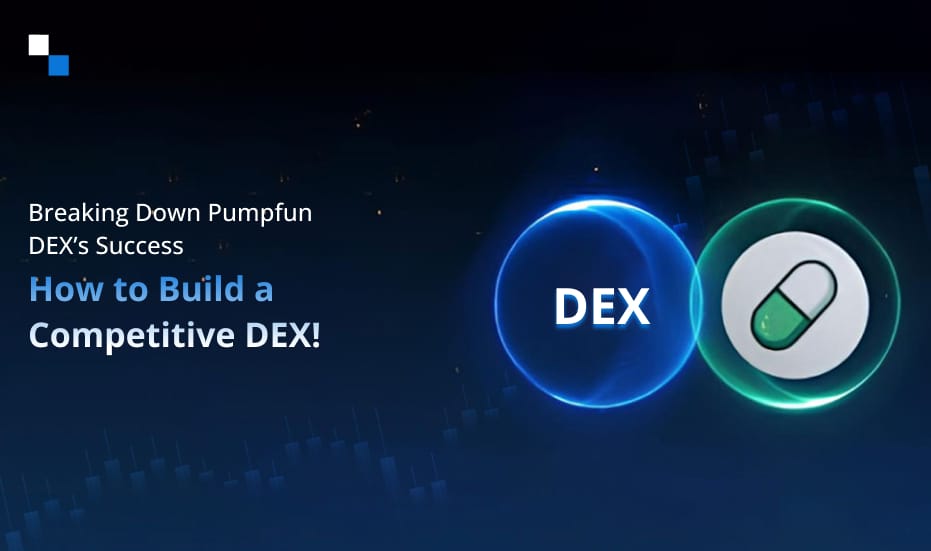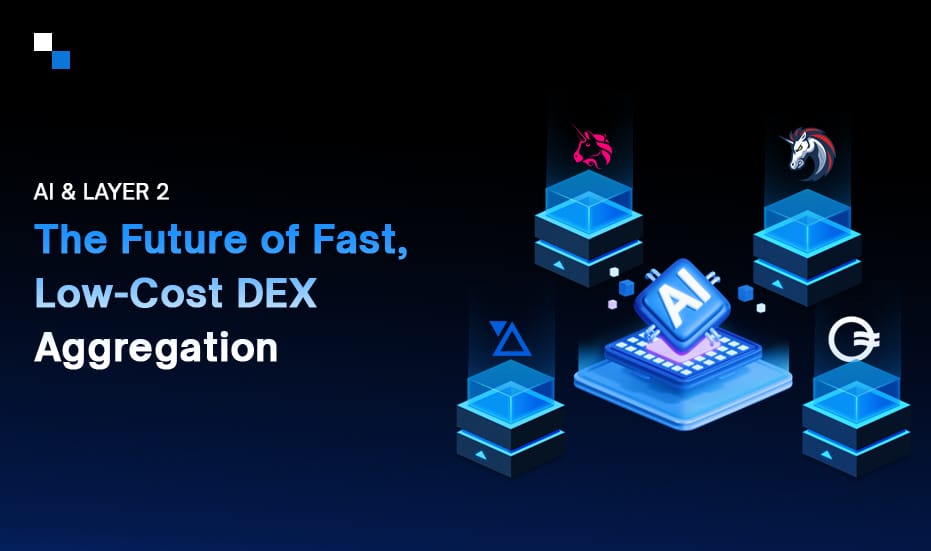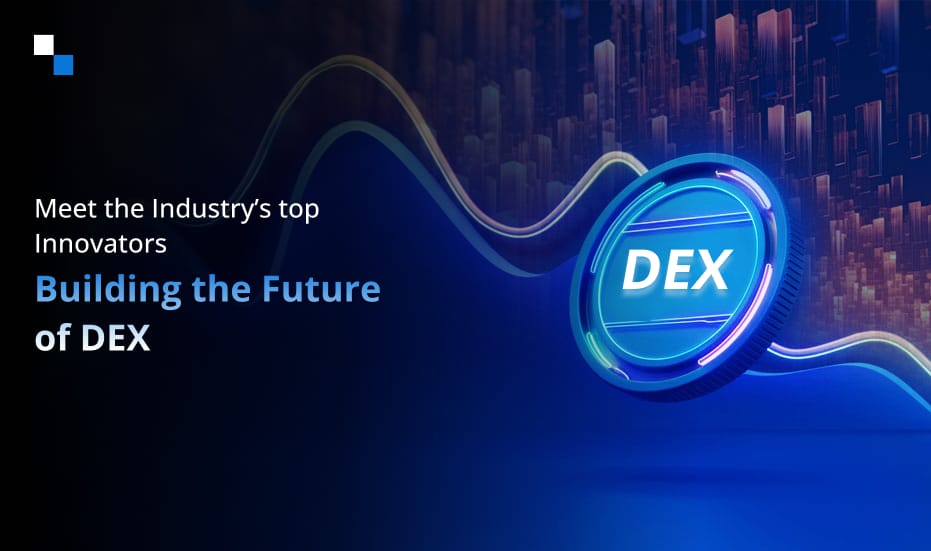
How much does it cost to integrate debit cards to your crypto exchange?
February 26, 2025
Can AI & Biometric Authentication Make Crypto Wallets Unhackable?
February 27, 2025- What’s the Hype All About? Chain Abstraction in DEXs Explained!
- What Are the Benefits of Integrating Chain Abstraction in White-Label DEXs?
- Primary Features of White-Label DEXs with Chain Abstraction
- Security & Compliance: How Chain Abstraction Strengthens White-Label DEXs
- How To Create White Label Decentralized Exchange With Chain Abstraction?
- Future Nexus: Chain Abstraction Integrated White Label DEX Software
Why do so many white-label DEXs struggle to scale despite offering multi-chain support? The answer lies in fragmented liquidity, inefficient cross-chain transactions, and costly bridging mechanisms—problems that traditional architectures fail to solve. Institutions and traders demand seamless, high-speed, and secure interoperability, but conventional DEX models introduce friction with manual asset transfers, network fees, and security risks.
This is where chain abstraction becomes the game-changer. By eliminating the complexities of bridging, it enables truly native cross-chain trading, ensuring seamless liquidity flow across multiple blockchains. The future of White-Label DEXs isn’t just about being multi-chain—it’s about integrating chain abstraction to achieve effortless, scalable, and institution-ready interoperability. Are you ready to unlock the next level of decentralized trading?
What’s the Hype All About? Chain Abstraction in DEXs Explained!
Decentralized exchanges are evolving beyond single-chain constraints, and chain abstraction is at the forefront of this transformation. The hype stems from its ability to unify liquidity, enable frictionless multi-chain transactions, and eliminate the complexities of traditional cross-chain trading. With over $2 trillion in total DEX trading volume in 2023, the demand for seamless interoperability has skyrocketed.
Traditional bridging mechanisms introduce security risks—cross-chain bridges accounted for billions in hacks in the past two years. Chain abstraction offers a trustless, smart contract-driven alternative, making DEXs more scalable and efficient. Furthermore, as EVM and non-EVM blockchains expand, multi-chain compatibility is no longer optional. Institutional investors and high-frequency traders are increasingly preferring multi-chain DEXs, further fueling adoption. But how does it compare to bridges? Let’s break it down.
Bridges vs. Chain Abstraction: Ideal For Your White-Label DEX?
Cross-chain interoperability is critical for modern DEXs, but how it’s implemented determines scalability, security, and user experience. While bridges have been the traditional solution, chain abstraction is emerging as a more robust alternative. Let’s analyze the key differences:

Chain abstraction disrupts multi-chain DEX design by removing bridge-related inefficiencies and security risks. As multi-chain adoption accelerates, this shift is becoming inevitable for scalable, future-ready DEXs.
What Are the Benefits of Integrating Chain Abstraction in White-Label DEXs?
Struggling with liquidity fragmentation, slow cross-chain trades, and high gas fees? As DEXs evolve, traders and businesses face growing inefficiencies when interacting across multiple blockchains. Traditional White Label DEX platforms often rely on cross-chain bridges, leading to security vulnerabilities, complex asset transfers, and fragmented liquidity pools—all of which hinder seamless multi-chain trading.
But what if your White Label Decentralized Exchange could bypass these challenges entirely? With chain abstraction, the barriers of multi-chain trading are removed, enabling direct, native asset transactions without the friction of bridges. Let’s explore how white-label DEX software transforms the trading experience and revolutionizes white-label DEX solutions.
- Frictionless Multi-Chain Transactions
In conventional DEX models, users must manually bridge assets between networks, introducing delays, higher gas fees, and exposure to security risks. Chain Abstraction Integrated DEX eliminates these inefficiencies by allowing traders to execute transactions across multiple blockchains without interacting with wrapped assets or third-party bridges. This native asset execution ensures faster trades while reducing user friction, making multi-chain trading effortless.
- Unified Liquidity Across Networks
Liquidity fragmentation has long been a challenge for DeFi. Without chain abstraction, liquidity pools are isolated per chain, limiting capital efficiency. White label decentralized exchange software powered by chain abstraction enables cross-network liquidity pooling, ensuring deeper order books and minimizing slippage risks. This enhances the trading experience while attracting institutional liquidity providers looking for a more interconnected ecosystem.
- Optimized Gas Fees & Cost Efficiency
Cross-chain transactions typically require users to pay gas fees on both the source and destination chains, making frequent trades costly. A Chain Abstraction integrated white label DEX dynamically routes transactions through the most cost-effective blockchain, significantly lowering fees. Additionally, traders can pay gas fees in any supported token, eliminating the need to hold native assets from multiple blockchains.
- Robust Security Architecture
With over $2.5 billion lost in bridge exploits, cross-chain vulnerabilities remain a pressing concern for DeFi projects. Unlike bridges that rely on wrapped assets and custodial intermediaries, white-label DEX exchange platforms with chain abstraction leverage smart contract automation to ensure trustless execution. This mitigates attack vectors, reinforcing security without introducing third-party dependencies.
- Simplified UX & Wallet Compatibility
Multi-chain navigation often deters users due to complex bridging steps and compatibility issues across networks. A Chain Abstraction Integrated DEX abstracts the underlying blockchain interactions, allowing users to trade assets across chains from a single interface. With seamless wallet interoperability, traders no longer need to manually switch networks or manage multiple blockchain addresses.
- Enhanced Institutional Adoption & Compliance Readiness
Institutional players demand high liquidity, security, and compliance-ready frameworks before entering the DeFi space. White Label decentralized exchange platforms leveraging chain abstraction align with regulatory expectations by eliminating reliance on unregulated third-party bridges. This fosters greater trust among institutional investors, driving higher adoption of on-chain trading solutions.
As blockchain interoperability becomes non-negotiable, white-label decentralized exchange software with chain abstraction represents the next evolution of multi-chain trading. With its ability to unify liquidity, optimize security, and lower costs, this innovation is reshaping the DEX infrastructure—positioning platforms for scalability in a hyper-connected blockchain ecosystem.
Primary Features of White-Label DEXs with Chain Abstraction
Whether you are a novel or an enterprise willing to design impeccable DEX development solutions with advanced features, helping you position yourself at the top of the market, you can do it by hiring efficient and certified blockchain experts who offer a host of decentralized exchange development services to inculcate the finest features in the solution. However, let us explore the wide range of features that you must consider when investing-
✔️ Unified Cross-Chain Liquidity Aggregation- Combines liquidity from multiple blockchains into a single pool, reducing fragmentation and improving trade execution.
✔️ Smart Contract-Driven Atomic Swaps- Eliminates bridge dependencies by enabling trustless, automated cross-chain transactions with on-chain validation.
✔️ Multi-Network Gas Fee Abstraction- Allows users to pay gas fees in any supported asset, removing the need for multiple native tokens.
✔️Cross-Chain Order Routing Mechanism- Automates order execution by sourcing the best liquidity routes across multiple blockchains.
✔️ Non-Custodial Infrastructure- Ensures user fund control with on-chain transaction validation, eliminating reliance on centralized intermediaries.
✔️ Interoperable Wallet & Identity Management- Streamlines multi-chain wallet authentication and keyless transaction signing for seamless access.
✔️On-Chain Compliance & Risk Mitigation- Integrates AML/KYC verification, smart contract-based compliance, and risk assessment protocols.
✔️ Multi-Asset & Token Standard Compatibility- Supports ERC-20, BEP-20, TRC-20, stablecoins, wrapped assets, and synthetic assets for broader trading options.
✔️ High-Throughput Adaptive Execution Engine- Optimizes trade execution speed, minimizes slippage, and enhances order settlement efficiency.
✔️ Modular API & SDK Integration: Enables businesses to customize and integrate with existing DeFi protocols for extended functionality.
Now that you have explored the advanced features you must include in a White label DEX platform, then you must consider keeping the security features too, as they are extremely paramount and need immediate attention while developing the solution.
Security & Compliance: How Chain Abstraction Strengthens White-Label DEXs
“Security isn’t just a feature; it’s the foundation of trust in decentralized finance.”
In a white-label decentralized exchange software, security breaches and compliance failures can cripple operations, exposing assets to smart contract exploits and regulatory scrutiny. As multi-chain interoperability expands, risks like liquidity fragmentation, bridge vulnerabilities, and cross-chain attack vectors demand robust safeguards. A Chain Abstraction Integrated DEX fortifies security by embedding trustless execution models, ZKPs, and decentralized identity verification (DID) to ensure seamless yet secure transactions.
On-chain compliance layers automate AML and KYC verification, enabling a White Label DEX Exchange to meet global regulatory standards while preserving decentralization. Multi-chain risk mitigation frameworks prevent double spending and rollback attacks through cryptographic consensus mechanisms. With programmable smart contract security, decentralized governance models, and multi-layer authentication, a White Label Decentralized Exchange achieves institutional-grade protection, ensuring that chain abstraction not only enhances interoperability but fortifies DeFi security at its core.
How To Create White Label Decentralized Exchange With Chain Abstraction?
Building a white-label decentralized exchange software with chain abstraction demands a highly structured approach to ensure seamless multi-chain interoperability, security, and scalability. A renowned DEX development company follows these five critical steps:
Step 1. Architecture Planning & Blockchain Selection
The foundation of a White Label DEX Exchange begins with defining its architecture—whether AMM, order book-based, or hybrid—while selecting compatible blockchain networks. Chain abstraction frameworks are integrated at this stage to ensure cross-chain liquidity aggregation without relying on third-party bridges.
Step 2. Smart Contract Development & Security Audits
Custom smart contracts are developed for trade execution, liquidity pools, and cross-chain transactions. These contracts undergo rigorous security audits to prevent vulnerabilities like re-entrance attacks, Oracle manipulation, and double-spending risks in a Chain Abstraction Integrated DEX.
Step 3. Multi-Chain Wallet & Compliance Integration
integrated white-label DEX requires seamless multi-chain wallet support with integrated decentralized identity verification (DID) for regulatory compliance. ZKPs and on-chain AML/KYC protocols ensure adherence to jurisdictional requirements without compromising user privacy.
Step 4. Cross-Chain Liquidity & Trading Engine Deployment
The White Label Decentralized Exchange incorporates a high-performance trading engine capable of processing transactions across multiple chains. Chain abstraction frameworks facilitate instant asset swaps, gas fee optimizations, and liquidity aggregation, eliminating manual cross-chain bridging dependencies.
Step 5. Testing, Optimization & Mainnet Deployment
Comprehensive testnet simulations validate transaction speeds, security resilience, and chain abstraction efficiency before the mainnet launch. Post-launch, continuous optimizations, governance upgrades, and MEV protection mechanisms enhance the DEX’s security, compliance, and trading experience.
A White Label DEX Exchange with chain abstraction integration future-proofs decentralized trading by enabling seamless, secure, and scalable multi-chain interactions, setting the stage for next-gen DeFi innovation.

Future Nexus: Chain Abstraction Integrated White Label DEX Software
The future of decentralized trading is converging towards Chain Abstraction Integrated White Label DEX Software, redefining enterprise-grade interoperability. As blockchain networks expand, enterprises face fragmented liquidity, operational silos, and cross-chain inefficiencies. Chain abstraction is poised to eliminate these constraints, establishing a unified DeFi infrastructure where assets flow freely across chains without reliance on intermediaries.
This paradigm shift paves the way for high-frequency cross-chain trading, real-time multi-chain settlements, and on-chain identity standardization, fostering institutional DeFi adoption. Enterprises leveraging White Label DEX Software with chain abstraction will gain programmable liquidity access, customized compliance layers, and scalability without vendor lock-in. The next era of decentralized exchanges is not just about trading—it’s about on-demand chain selection, gas fee abstraction, and seamless composability with DeFi primitives. As adoption accelerates, Chain Abstraction Integrated White Label DEXs will become the backbone of next-gen financial infrastructure, shaping a truly borderless digital economy.
What’s Stopping Your White-Label DEX from Achieving Cross-Chain Dominance?
As the DeFi landscape evolves, can a white-label decentralized exchange remain relevant without seamless cross-chain functionality? Without chain abstraction, are you prepared to handle liquidity fragmentation, high transaction costs, and the inefficiencies of multi-chain asset transfers?
At Antier, we specialize in building high-performance White Label DEXs that eliminate interoperability barriers with enterprise-grade chain abstraction solutions. Our certified blockchain engineers integrate intelligent asset routing, unified liquidity aggregation, and advanced security protocols, ensuring frictionless trading across networks. If your white-label decentralized exchange software isn’t leveraging chain abstraction, how long before it becomes obsolete? Future-proof your platform with Antier’s cutting-edge expertise and dominate the next era of decentralized trading. The time to act is now—will your DEX lead or lag?



